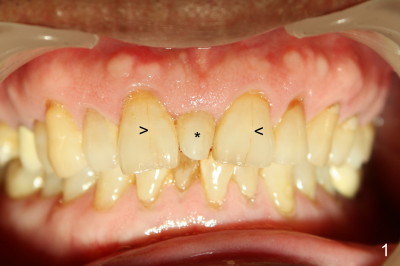
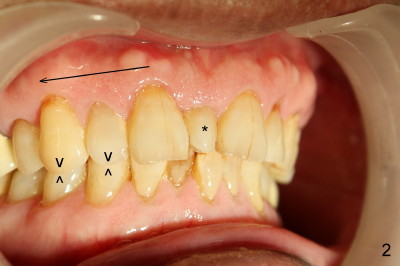
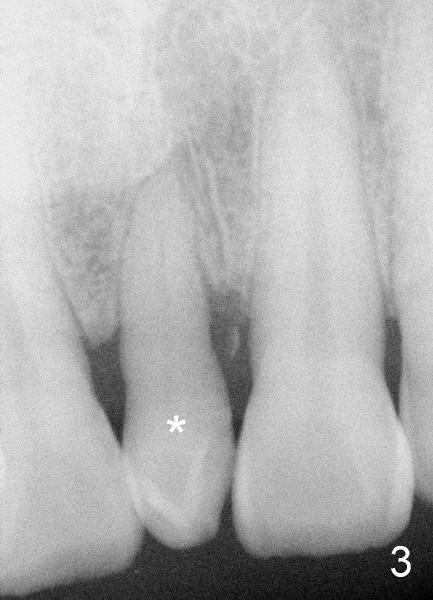
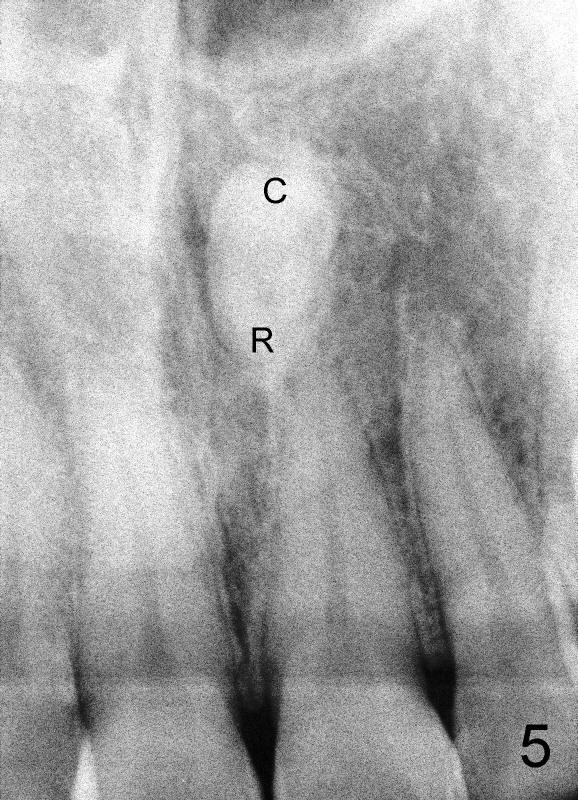
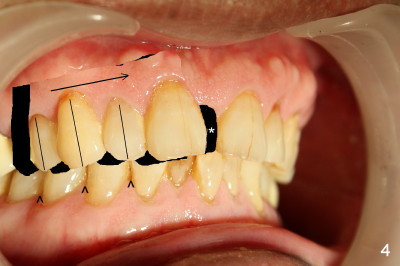
 |
 |
|
 |
 |
 |
Long-termed Effect of Extra Tooth
Sometime an extra tooth (Fig.1,3 *) may erupt like neighboring normal teeth. It becomes a part of chewing weapon to a patient of 61-year-old. Seniority can be confirmed by the fact that the neighboring teeth have crack lines (Fig.1 <). As we age and accumulatively chew a lot, some of our teeth may show crack lines. Additionally, this patient loves to chew something hard, such as chicken bone.
In modern world, this tinny tiny extra tooth is a cosmetic issue. Besides, it shifts neighboring teeth backward (Fig.2 long arrow) so that each of upper teeth chews against directly on the top of each corresponding tooth on the bottom (<). This is not normal. This type of tooth arrangement makes wear and tear to our teeth more severe. In fact crack teeth are part of wear and tear.
What is normal about our bite is that each top tooth (Fig.4 line) should occlude into the space between two bottom teeth (^). We can chew more efficiently without too much wear and tear. If this patient were younger, this extra tooth should have been extracted (Fig.4 *) and the shifted teeth should have been moved to where they belong (long arrow).
Fig.5 shows an extra tooth of the son of this patient, suggesting that this condition has genetic component. This extra tooth seems to have no cosmetic problem, because it remains inside the jaw, with the crown (C) on the top and the root (R) on the bottom. That is why this extra tooth never comes out.
Xin Wei, DDS, PhD, MS 1st edition 06/21/2012, last revision 07/27/2012